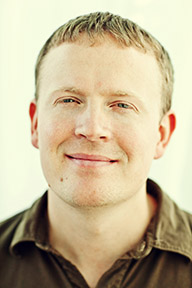Spotlight on Stephen Voss
Apr 9, 2013
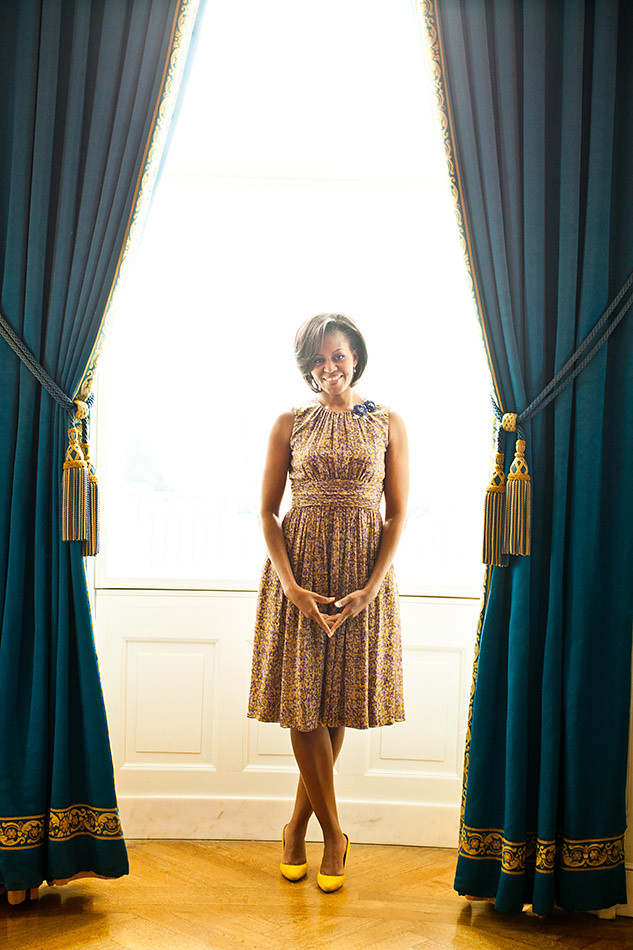
TID: Thanks for sharing about this image, Stephen. Please tell us about the image's context, background and the assignment.
Stephen: This photograph of First Lady Michelle Obama was taken in the Blue Room of the White House. I had been hired to photograph her as well as Dr. Jill Biden, both together and separately for the magazine Military Spouse.
Assignments like these always begin in vague terms, a "high profile" subject who "might" be available for a few minutes on a certain day. So many times, the plans fall apart before they ever really get rolling, so even when the details of this shoot began to take shape, I was doubtful it was going to happen. Only in the week before the shoot, when I had to submit my information for them to run a background check, and a detailed equipment list - did the reality of the shoot begin to hit me.
A few days later, I was able to visit the White House and walk around the first floor with a member of the First Lady's staff to scout a location. There's no lack of ornamentation or color in these rooms, and they all felt a little overwhelming. In the end, I went with the Blue Room which had the most subdued colors (tan wallpaper, blue decorations) and also gave me an outside option on the balcony overlooking the South Lawn.
The magazine had some specific needs that I had been hired to meet in terms of fitting the story, though the editor also entrusted me to basically "do what I do," in terms of specific photos. But I also knew this sort of opportunity doesn't come along very often so I was keen on fulfilling both the magazine's requirements and hopefully coming away with something that I was happy with (even better, making an image that accomplished both.) To those respective ends, I spent quite awhile sketching out some lighting ideas and testing them out in my studio to figure out what I wanted to do.
I spend a lot of time looking at other photographers' work on a regular basis, but when I'm starting this process, I like to clear my head a little and try to start from scratch, keeping all options open. I find that if I start thinking in terms of how another photographer would shoot this, it narrows my focus too much and takes a lot of interesting ideas off the table.
This experimenting part of the process really helps me hone in on the mood of the image, and allows me to try out a lot of ideas and make the call on what's good and what's bad.
TID: What were some problems or challenges you encountered during the coverage of this event, and how did you handle them?
Stephen: This shoot was scheduled for 11:45AM - 12:15PM. My assistant and I arrived at the Northwest gate of the White House at 9AM and were cleared and taking our first test shots around 10AM. We had three of the four setups more or less figured out when, out of the corner of my eye, I saw the First Lady walk into the room, 45 minutes early.
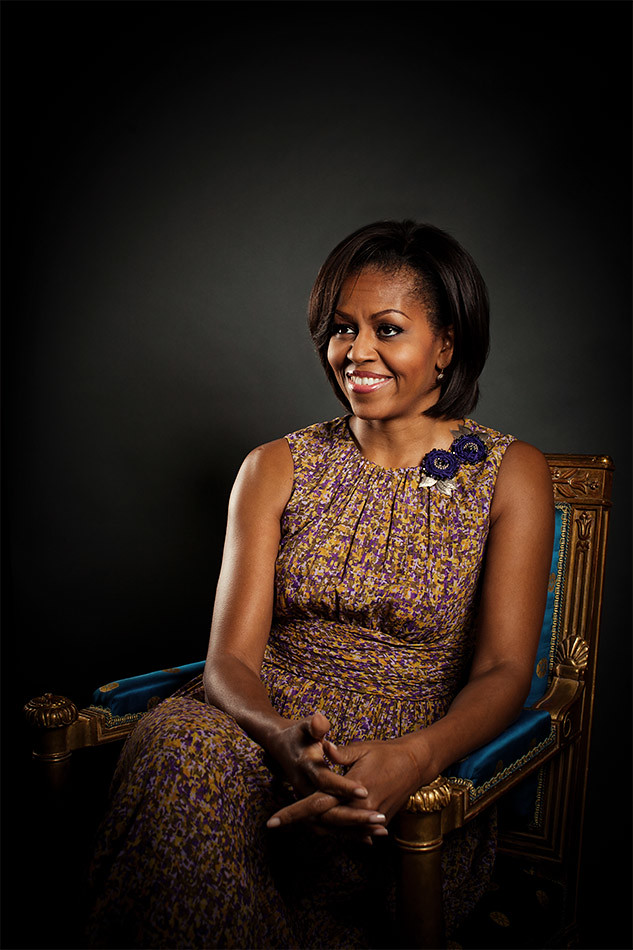
After about three seconds of absolute terror, I quickly mapped out a plan. I had a ballpark idea of the exposures for the untested setup; I knew the ratios and positioning of the lights were pretty close as I'd tested each setup in my studio space. I also knew that keeping the First Lady waiting would be a huge mistake, so we got right into it. To give some context to this, I've photographed hundreds of politicians, world leaders, celebrities, etc., and have never once had a subject arrive more than a few minutes early. This wasn't just unprecedented, it was absolutely unheard of and I'm not sure I've had a more anxiety-producing moment during a shoot before or since.
The other issue came with the outside shot I had planned, which was the first setup. Once we walked out onto the portico, it was clear that the wind was going to be a problem and about five shots in, I could see that the First Lady wasn't really pleased about her hair blowing around so much. I made the decision to move on to the next setup and I also made a point of telling her what I was thinking - that the wind was an issue and how I didn't want her hair to get messed up. Truth was, the more important aspect of that brief conversation was for me to communicate to her that I was looking out for her and wanted this to be a good shoot for her as well as me. In the same way, when I photograph men, I often make a point to carefully look them over, making sure there's no dust on their jacket, that their tie is straight, etc. I want the subject to know that I'm taking care of them, that we're both here to come away with a strong image.
TID: One of the triggers for my interest in this picture was an email promo you sent out. It explained and showed you brought little carpet squares to the shoot because equipment couldn't touch the floor! Can you explain that situation and talk about strategies for troubleshooting or problem-solving, both before the shoot and as things are happening on-the-fly?
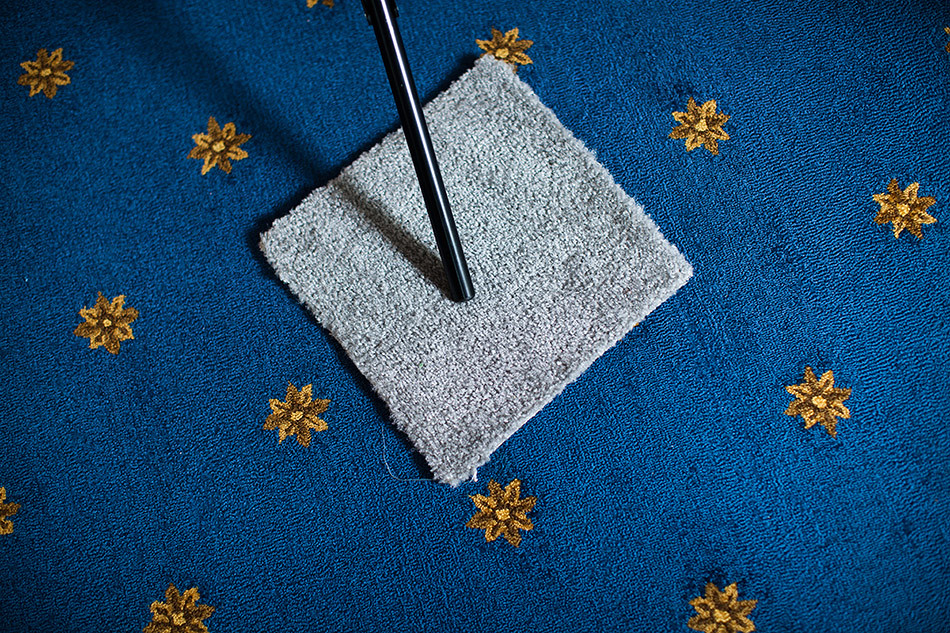
Stephen: I was able to go to the White House a few days prior to the shoot to walk around a bit with one of the First Lady's staff. During that time, I asked her a ton of questions about the shoot, the logistics, the First Lady's sensitivity to bright flashes, just anything I could possibly think of, since that was my one opportunity to really flesh out the details. I certainly didn't want my hesitation to ask a dumb question to come back to haunt me during the shoot.
After I chose to shoot in the Blue Room, I was told about the carpet squares, as well as the White House furniture movers who would be on call in case we wanted to move anything in the room. Every single person I interacted with at the White House was such a professional and made my job easier.
TID: Can you talk about how you connect with subjects? Full disclosure: I've assisted for you before, and last week the conversations with an initially extremely stiff and uncomfortable subject ran the gambit from Medicare, to the best Panini in D.C., to your son's favorite place to celebrate the Fourth of July. By the time the shoot was over, the subject was smiling and joking.
Stephen: First off, having kids helps, since everyone likes talking about their kids.
But seriously, I've had to work really hard at this. I'm naturally introverted and I was first drawn to photography as a way to explore the world and meet people. When I start shooting portraits more (my background is as a photojournalist), I realized that my interactions with the subject had a lot to do with how much the subject would be willing to cooperate, and what kind of photographs I would be able to make. So my hope is to find common ground with people by first researching their background thoroughly and finding something that piques my interest.
Not sure if these specifics are helpful, but as a few examples -- when I photographed Elizabeth Warren, I had read a bit of the book she had written with her daughter. I was fascinated about how one co-writes a book, especially with a family member, so we spent a lot of time talking about that process. With Newt Gingrich, we talked about the merits of the National Zoo and its new exhibits, since he's a zoo fanatic.
Truthfully, I'm deeply curious about how people work, what makes them successful and how they choose to spend their time. During the shoot, I couldn't care less about policy decisions a senator made, I just want to find a point of connection with them on a personal level. Digging into that often makes for a nice foundation of conversation topics during the shoot. Sometimes a subject clearly hates having his or her photographs taken, and tapping into that awkwardness can also bring interesting photos.
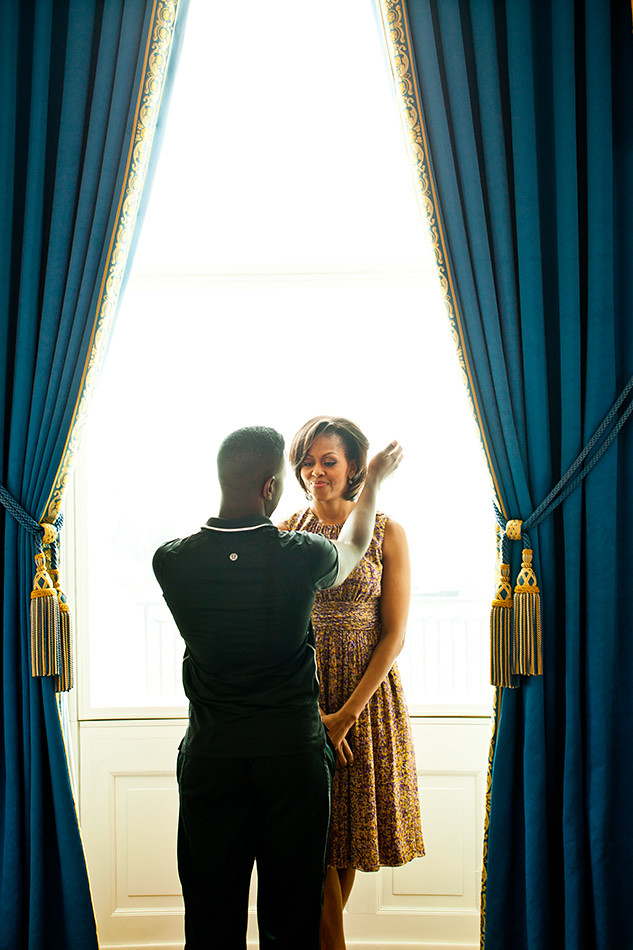
TID: Can you describe what was going on in your mind as the image took shape, and then also what you were thinking when you made the image?
Stephen: Portrait shoots with multiple setups can be a pretty delicate dance with lots of on-the-fly decisions. During the shoot, I'm constantly weighing how long to spend with each setup, riffing a bit on any new ideas that pop into my head while I'm shooting, paying attention to how my subject is reacting as I interact with her and, of course, hoping for those moments where all that planning and control is somehow buoyed into something real and spontaneous. For all my planning, there really is something improvised and unexpected about my favorite portraits.
I picked this particular spot as the one naturally lit setup I'd do. While we were talking during the shoot, I gave the First Lady very little direction in terms of posing. I like subjects to settle into themselves and find those little variations in pose much more interesting than whatever direction I could give them. The First Lady was clearly a pro at this and as we walked over to the window setup, she immediately assumed this pose which somehow felt both carefully practiced and perfectly natural.
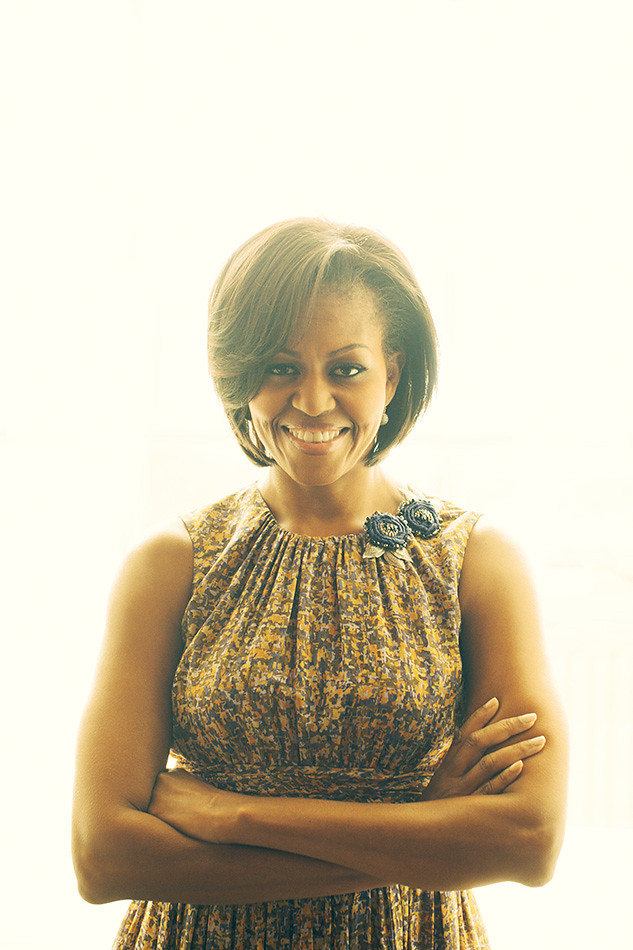
In terms of this specific image, there was all these little symmetries that I loved about it -- the curve of her arms mimicking the curtains, the slight tilt of her head that seemed to compensate for her being off-center in the frame.
TID: It sounds terrifying to have such a high-profile subject arrive so early and unexpectedly! How did you stay calm? Do you carry a flask of strong bourbon around in case of an emergency? Was there anything that you learned or put to use in later assignments that come about from this experience?
Stephen: Getting into the right frame of mind for these shoots is critical. And all shoots come with some level of improvisation and unexpected moments. I prepare for this by consciously trying to open myself up to be in a good mental place where I accept whatever the shoot might bring.
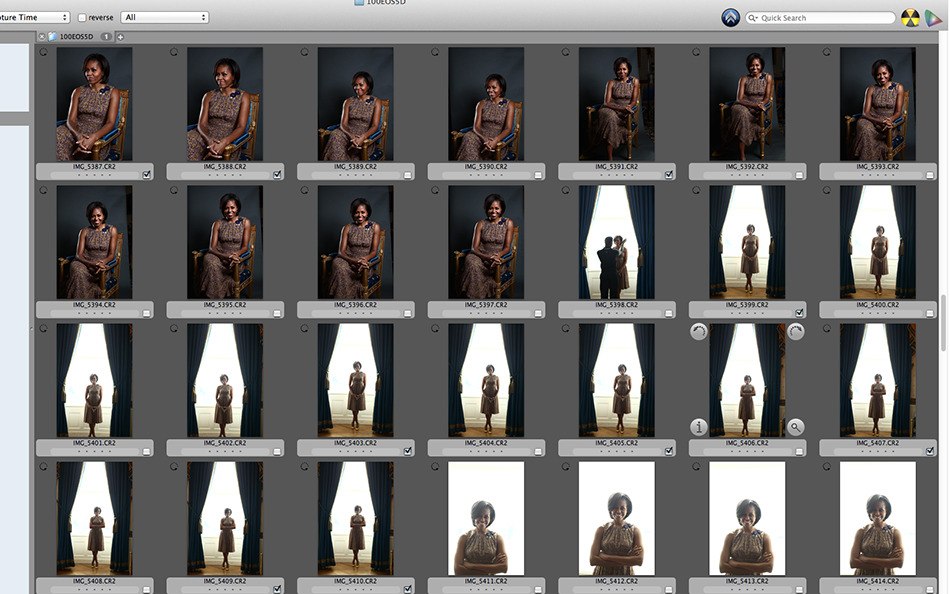
At heart, I've always been a really logical person, and while the subject arriving early was certainly a wrinkle in my plans, it wasn't a deal-breaker. I reasoned that there was absolutely nothing positive that could come of trying to stall her or plead my case that she was early. As I mentioned before, after that initial shock, it was all about throwing out the original shoot plan and quickly figuring out how we were going to get to each shot. In the end, I take ownership of these shoots and feel that I have the ultimate responsibility in bringing back good photos regardless of whatever difficulties there might be.
I've thought a lot about if I should've handled her early arrival in a different way, and if there was any better way to plan for it. I think I made the right decision to start shooting, and I also think it would be a mistake to take too much away from this aspect of the shoot since it's such an anomaly. Planning for a subject to arrive 45 minutes early sort of feels like those doomsday preppers -- trying to account for every possible thing that can go wrong in a shoot will spread you too thin and make it harder to focus on the basics.
One small regret I do have is that I wished I'd kept this shoot simpler. The different setups I did mostly worked in one way, i.e. the subject had to be faced in the right direction, etc., for the light to hit her correctly. In retrospect, I think I should have created some broader lighting platforms that would've allowed for more flexibility in positioning. So the lesson here might be to not overthink these setups and get too specific, as it can shut out a more open exchange of ideas and creativity as I'm shooting.

:::Bio:::
Stephen Voss takes photographs for magazines, newspapers and organizations around the world. His work is a mix of lit portraiture and reportage. Clients include Wired, The New York Times Magazine, The Atlantic Monthly, Time, Newsweek, The Wall Street Journal, National Public Radio, Stern, Washington Post Magazine, The Guardian, and Smithsonian Magazine.
Stephen makes it his job to take remarkable, memorable photographs. He lives with his wife and their two beautiful children in Washington, DC and is available for assignments on location in Washington, DC and everywhere else, too.
